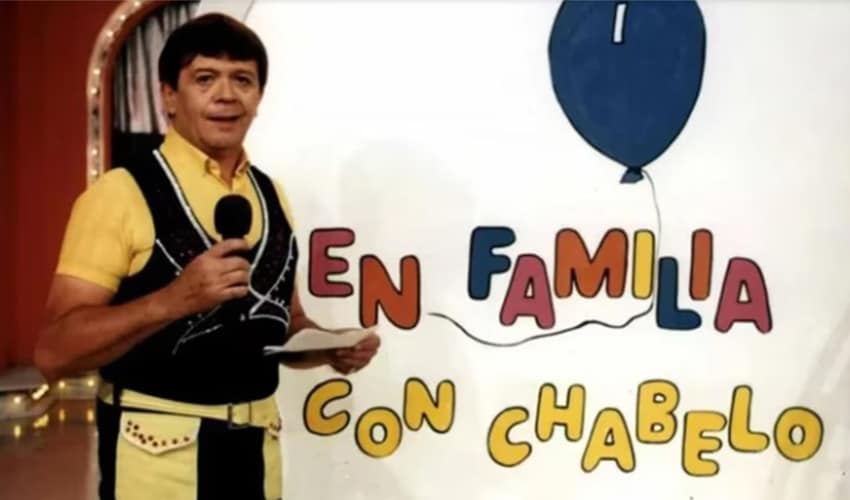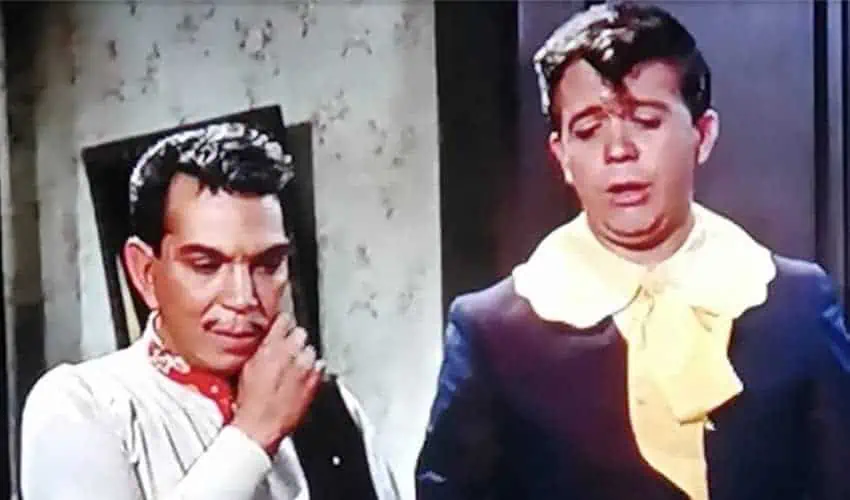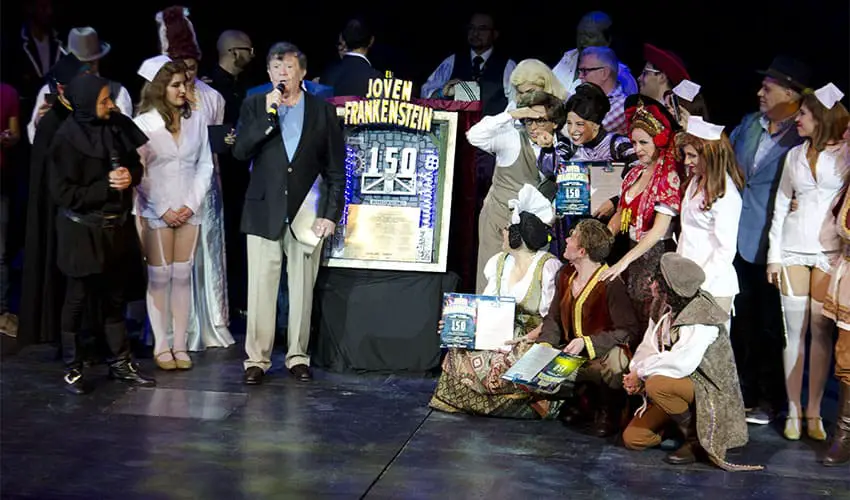Maybe I have been in Mexico too long. I was at the market when I looked up at a television set to find out that performer Xavier López, a.k.a. Chabelo, had died. My response was “no manches!” (You’re kidding!)
Understanding the character known as “the friend of all children” is one key to understanding 20th-century Mexico.

López died at age 88 in Mexico City on March 25, and Mexican newspapers are still writing up homages to him. But they don’t explain why he was/is so important to Mexicans, likely because “everybody knows.”
With a career spanning over six decades, López essentially wound up as a “little boy” with the face of an old man. While he did some other work, including in film and theater — he had a voice role in the movie “Coco” in 2017 — just about his entire career was based on the playing of a single character, Chabelo.
The character was readily identifiable through the voice López affected for the part, his body movements, and his wearing of shorts/cargo pants. It emerged early in his career, appearing in movies, radio and television. But López’s mark on Mexican culture was made with the show “En Familia Con Chabelo” (Family Time With Chabelo), which appeared every Sunday morning for more than 2,400 episodes from 1967 to 2015, according to its broadcaster, Televisa.
That longevity means that Mexican families have two, even three, generations of viewers. Parents who grew up watching him watched him again with their own children. The show was part of a Sunday ritual which included breakfast and, often, Mass.

Artisan José Guadaluupe Urbán notes that until relatively recently, Mexican homes had only one television set, so during those hours of the day, having family-friendly entertainment was important. My Mexican husband has fond memories watching the show with his brothers on their parents’ bed, as the family’s only set was in their room.
“En Familia” was a variety and game show for kids and featured celebrity guests — often comedians or musicians performing. Like game shows in the U.S., seeing normal people winning and losing was part of the excitement.
Professional dollmaker Ana Karen Allende appeared on the show once and won, interestingly enough, a doll.
“I can still remember her smell and her blonde hair,” she says.
This 2015 ad for the last episode of “En Familia Con Chabelo” gives an idea of the show’s format.
The show’s most famous element was the part of the show called La Catafixia. López made up this word to refer to a gamble that offered contestants the chance to keep a prize they had just won in the game show for an unknown — possibly better, possibly worse — hidden prize on the stage (“The Price is Right” game show does something similar.).
Actress Itatí Cantoral remembers that she was “always nervous” when she saw the Catafixia part of the show.
“I would yell, ‘No, please! Don’t do the Catafixia!'”
Catafixiar has since entered Mexican Spanish, meaning to take a risk with no idea if the result will be better or worse.

The show’s sponsors, such as the candy Paletas Payaso (find them at supermarket checkouts) and the furniture company Muebles Troncoso became famous in Mexico, not only for the plugs that Chabelo did during the show but also for their products appearing as prizes. Many Mexican children’s lists for Santa and/or the Reyes Magos (the Three Wise Men, who give out Christmas holiday gifts to children in Mexico) were based on products they saw on the show.
But the fun and games had a serious side: López promoted values such as teamwork, trust, confidence and even being a good parent, says Jessica Alcántara of the Mexico City media company BBmundo.
The comedy on the show was “white humor,” meaning no satire, sarcasm or innuendo. Although Mexico has another famous “old man dressed as a child,” “El Chavo del 8,” the two shows were distinct — the latter a sitcom, sometimes with a darker edge.

“En Familia” cut across Mexico’s rather strong class divisions, as it appealed to what Mexicans have in common, especially the appeal to family unity.
“There is not one Mexican person who doesn’t know Chabelo,” journalist Laura Martínez told the BBC.
A 2019 Alliant International University dissertation notes that relating to Chabelo (and other pop culture icons) is something that can separate Mexican immigrants from Mexican-Americans. Mexican Tik-Toker celebrity @jezzzini was embarrassed in London because when he was asked about idols similar to Queen Elizabeth (who had recently died) Chabelo came to mind.

English-language sources about López tend to call him “Mexican-American” or the like because he was born in Chicago, but neither he, and definitely not his fans, would consider him such. His U.S. birth was simply a matter of where his mother was when he was born. He was raised in Mexico and always identified as such.
The show on every level was about family, which López called “…the most beautiful in human life and should be fundamental in television” but lamented that much modern programming is “trash.” He also commented that “The world has changed and therefore the children. It’s not that they have lost their innocence; what has happened is that they live more hurriedly [to grow up].”
One way that the world has changed is that Mexican audiences do not seem to be as forgiving about actors who do not look the age of their parts. Chabelo got a pass until the end, but others from the same era have been recently ridiculed in social media for continuing to play their characters.
After retirement, Chabelo’s fame got a second wind thanks to the same internet… and this is how I know him best. Like Queen Elizabeth, Betty White and others, it seemed that Chabelo/López would live forever.
Internet memes about his longevity are legion, with more appearing after some elderly Mexican celebrity died, implying that Chabelo had outlived yet another contemporary.
Some memes have since appeared since his death, as a kind of homage.
So, yet another person I thought (jokingly) would outlive my relatively young self is now gone, and I have to wonder, “Does this mean Keith Richards will really someday die?”
Leigh Thelmadatter arrived in Mexico over 20 years ago and fell in love with the land and the culture in particular its handcrafts and art. She is the author of Mexican Cartonería: Paper, Paste and Fiesta (Schiffer 2019). Her culture column appears regularly on Mexico News Daily.
